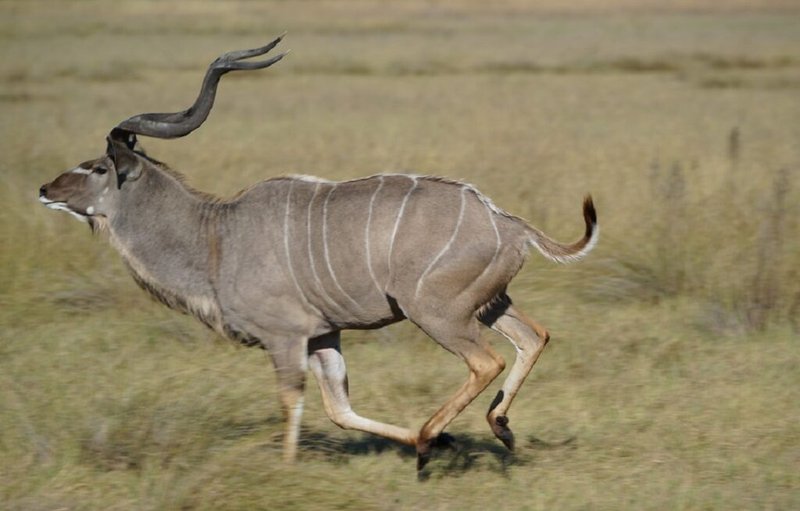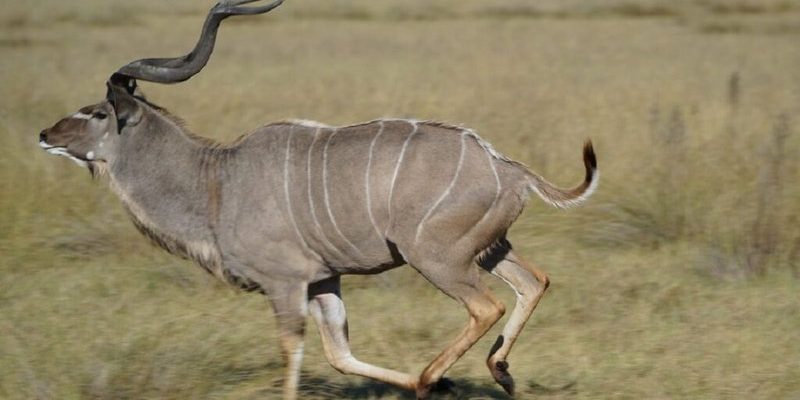
Kudus, known for their impressive twisted horns and striking grayish-brown coats, have a lot going on in their heads. They may not solve puzzles like crows or chimpanzees, but they use their wits in ways that help them survive. From their social structures to their foraging techniques, kudus demonstrate several cognitive traits that prove they possess a certain level of smarts. Let’s explore the fascinating world of kudu intelligence together.
The Kudu’s Habitat: A Complex Environment
Understanding how smart a kudu is starts with recognizing where they live. Kudus inhabit the woodlands and scrublands of eastern and southern Africa, where they often have to navigate through dense and diverse habitats. This environment poses challenges that require quick thinking and adaptability.
In these mixed environments, kudus must find food while evading predators like lions and hyenas. Their ability to assess their surroundings is crucial. For example, when startled, a kudu can cut through thick brush using its agility and speed, which requires not just physical prowess but also a clever assessment of possible escape routes. Think of it like a game of chess, where they must always be a few steps ahead of their opponents.
Additionally, kudus are known for their excellent camouflage. Their grayish-brown coat blends seamlessly into the background, making it harder for predators to spot them. This natural talent isn’t just about having a pretty coat—it’s a smart adaptation to their habitat. Kudos to the kudus for knowing when to stand still and blend in!
Social Behavior: The Power of Group Dynamics
Kudus are generally social animals, often found in small herds. This social structure plays a significant role in their survival and cognitive development. Within these groups, they communicate through body language, vocalizations, and even scent marking. You might be wondering how this relates to their intelligence—let me explain.
When kudus gather in herds, they rely on each other to spot danger. One alert kudu can warn the others of a lurking predator, which shows impressive teamwork. They have a keen sense of observation and can read subtle cues from their companions. If one kudu suddenly freezes or raises its head, the others will quickly follow suit, showing an understanding of group dynamics that reflects their intelligence.
Moreover, kudus exhibit a hierarchy within their herds, with dominant males maintaining their rank through displays of strength and behavior. This pecking order is essential for maintaining social harmony and cooperation within the group. Social intelligence, right? It’s like being part of a well-orchestrated team where everyone knows their role.
Problem Solving: Clever Foraging Tactics
Kudus are herbivores, and their ability to find food is directly linked to their cognitive skills. They thrive on a diet of leaves, fruits, and shrubs, often making them expert foragers. Their foraging habits require them to be resourceful and adaptable, particularly during the dry season when food is scarce.
One fascinating aspect of their intelligence is their ability to select nutritious leaves while avoiding toxic ones. Kudus often use trial-and-error learning to figure out which plants are safe to eat. Over time, they develop a mental map of their environment, remembering where to find the best food sources. That’s some impressive recall for a creature that may not have a famed reputation for its brainpower!
Additionally, kudus are known to reach high branches, using their long necks and agile bodies to access young leaves that other animals may not reach. This ability to adapt their foraging techniques not only reflects their intelligence but also their physical capabilities.
Predator Awareness: Staying One Step Ahead
Kudus face numerous threats from predators, and their intelligence is evident in how they evade these dangers. Their acute senses—especially sight and hearing—make them particularly aware of their surroundings. Kudus can detect movement or sound from quite a distance, which gives them a crucial head-start when it comes to fleeing.
Moreover, kudus are known to exhibit a behavior called “anti-predatory strategy.” When a kudu senses danger, instead of bolting immediately, it may first freeze or take a cautious approach, scanning the area before deciding on an escape route. This measured response shows their ability to assess situations rather than react blindly, a sign of smart thinking in the wild.
This strategy extends to their knowledge of predator patterns. Kudus learn from experiences—if they observe specific predators in certain areas during particular times, they adjust their movements accordingly. This adaptive behavior underlines their intelligence and ability to learn.
Communication: Vocalizations and Body Language
When it comes to navigating social situations, kudus are quite eloquent—without saying a word! Their communication can include a mix of vocalizations, body movements, and scents. Kudus can make a variety of sounds, such as grunts or snorts, which convey different messages to others in their herd.
Have you ever noticed how animals often communicate without words? Kudus are a great example. They rely heavily on body language to signal their mood or alert others to potential threats. For instance, if a kudu raises its head or flicks its ears, it may be trying to communicate that it senses something unusual. This nuanced form of communication showcases their cognitive abilities and social intelligence.
Additionally, kudus will also use scent marking to communicate territory and reproductive status. By understanding these signals, kudus can navigate their social structures effectively. So, the next time you see a kudu, remember that there’s a lot more going on than meets the eye!
Kudus might not be the first animals you think of when it comes to intelligence, but they certainly have a lot to offer in terms of cognitive abilities and behavior. From their adept foraging tactics to their keen social awareness and communication skills, there’s much more than meets the eye. These graceful creatures have adapted to their environments in ways that reflect their mental prowess, showing us that intelligence comes in many forms.
As we delve into the complexities of wildlife, kudus reminded us of the intricate ties between behavior and survival. So, the next time you catch a glimpse of a kudu in the wild or at a zoo, take a moment to appreciate the smart strategies behind their everyday lives. With their unique adaptations, they exemplify how intelligence exists not just in the human realm but throughout the animal kingdom, each species solving the challenges of life in its own intelligent way.

